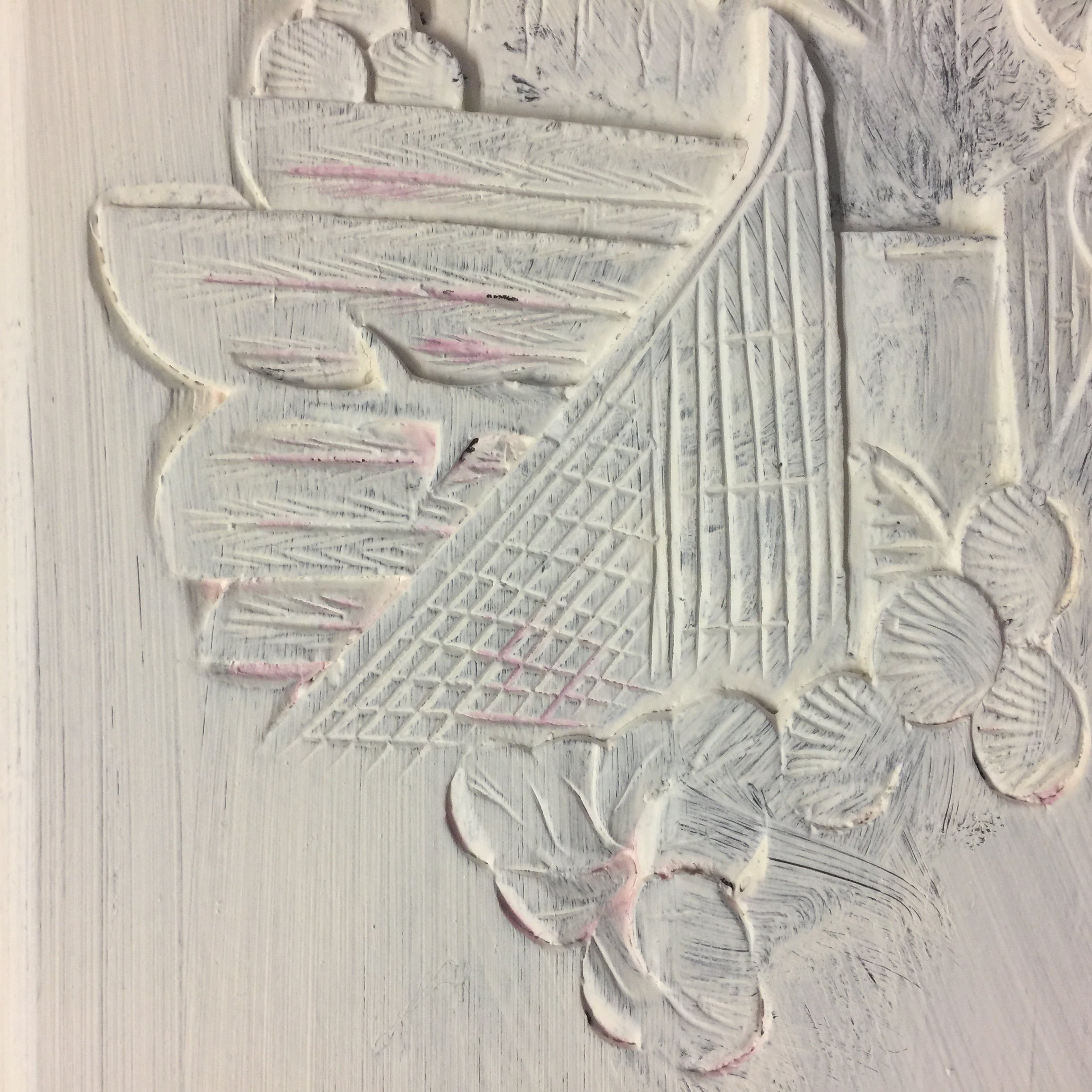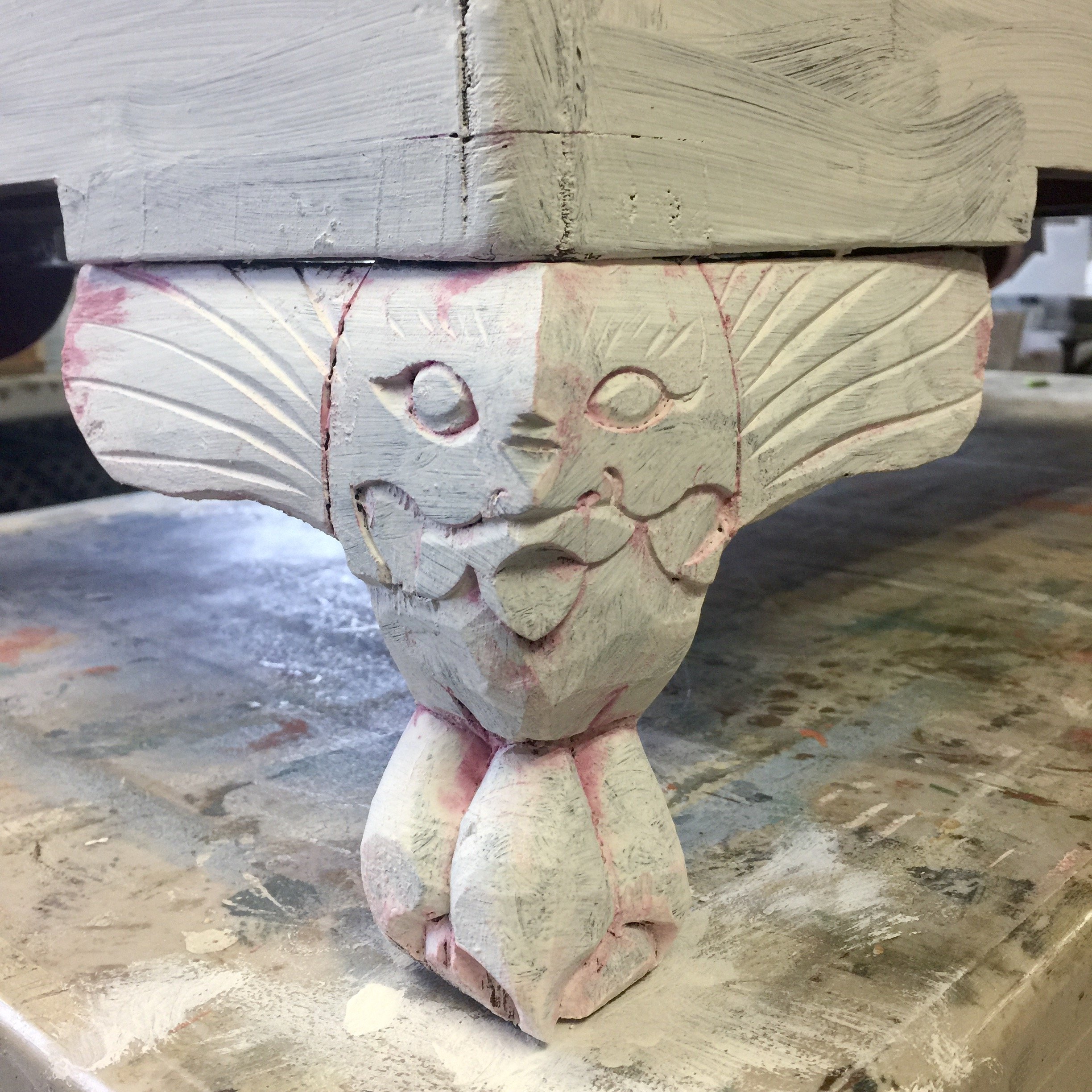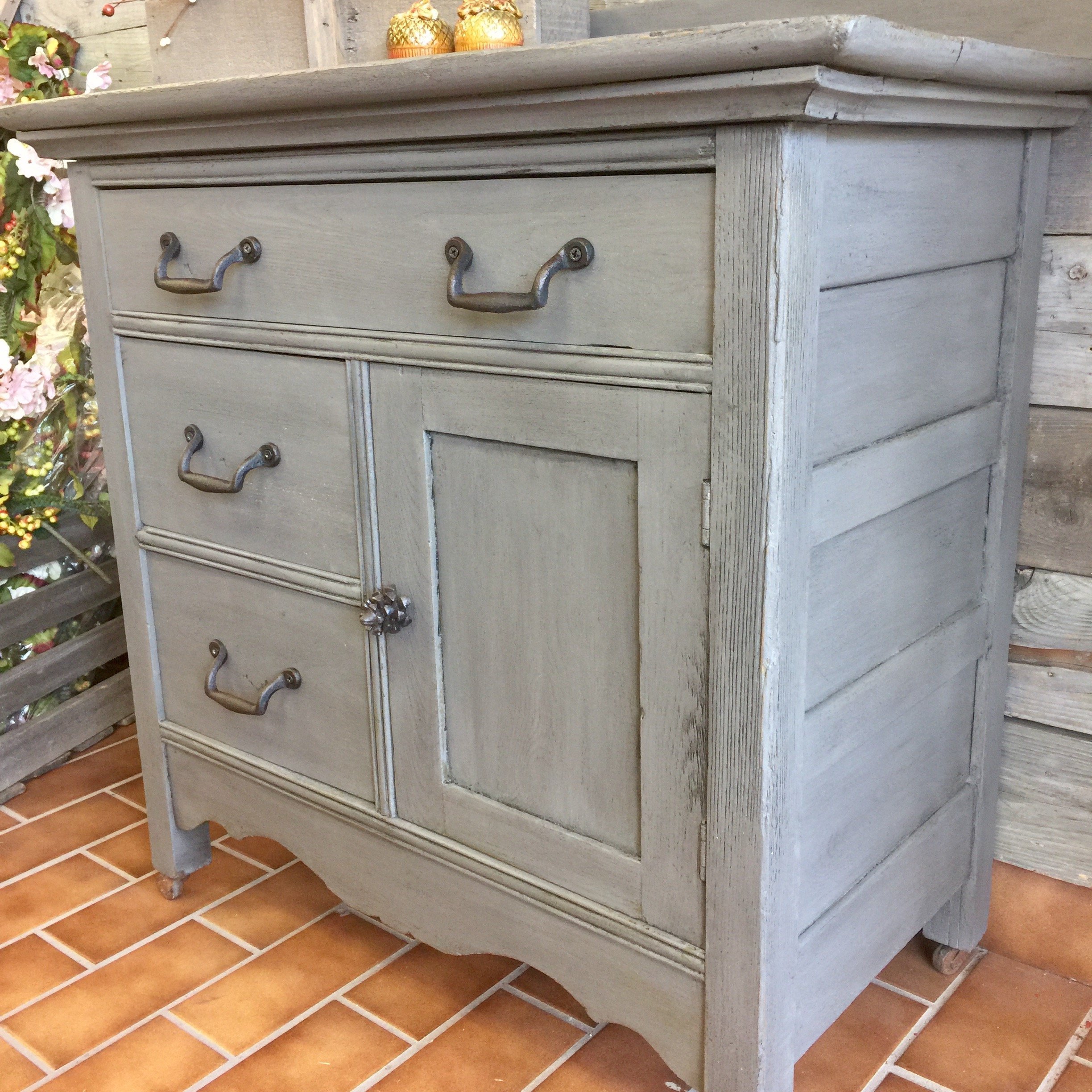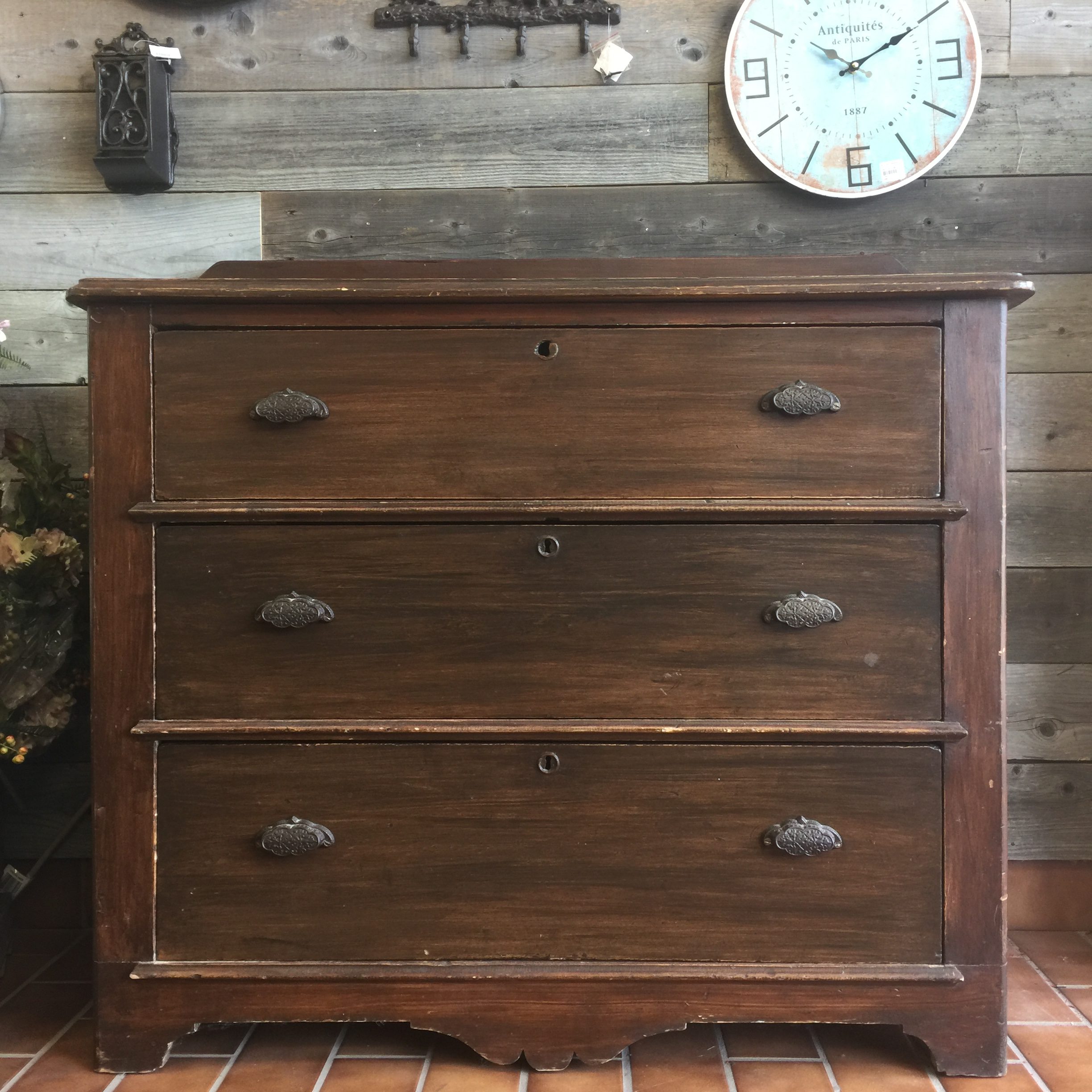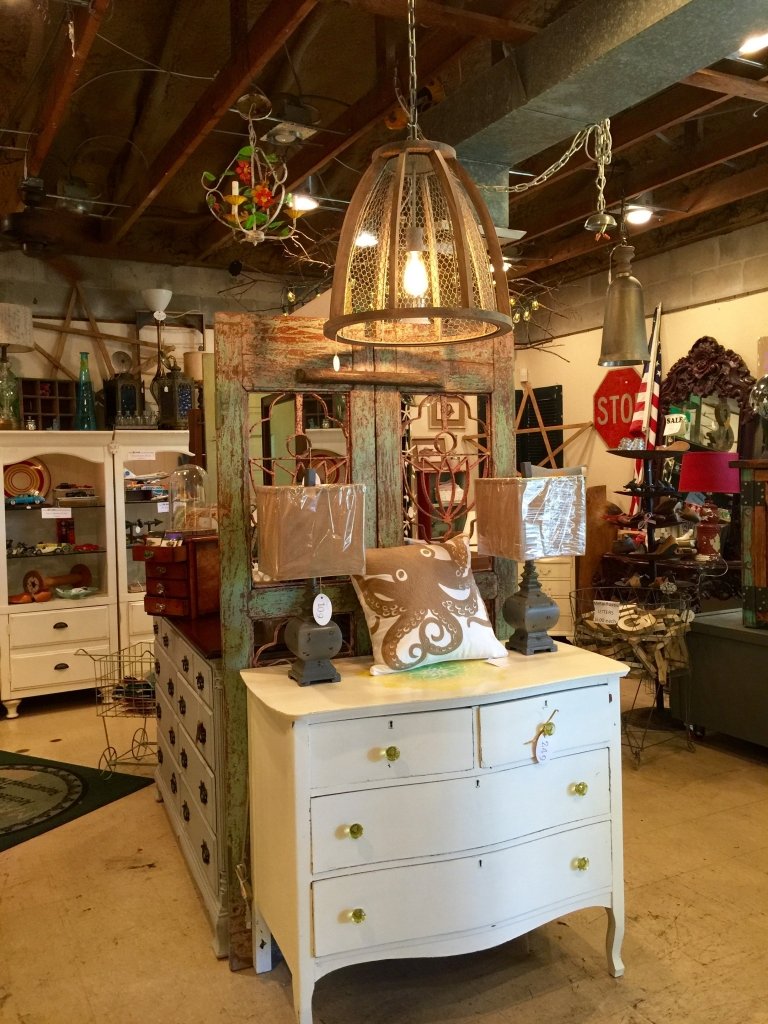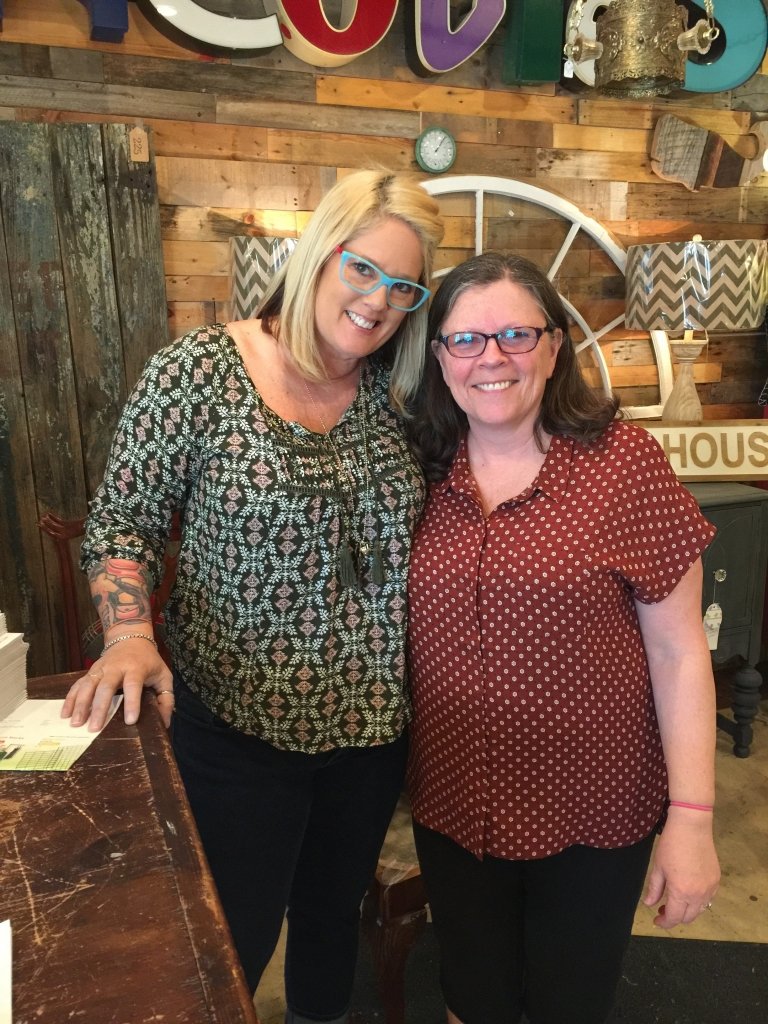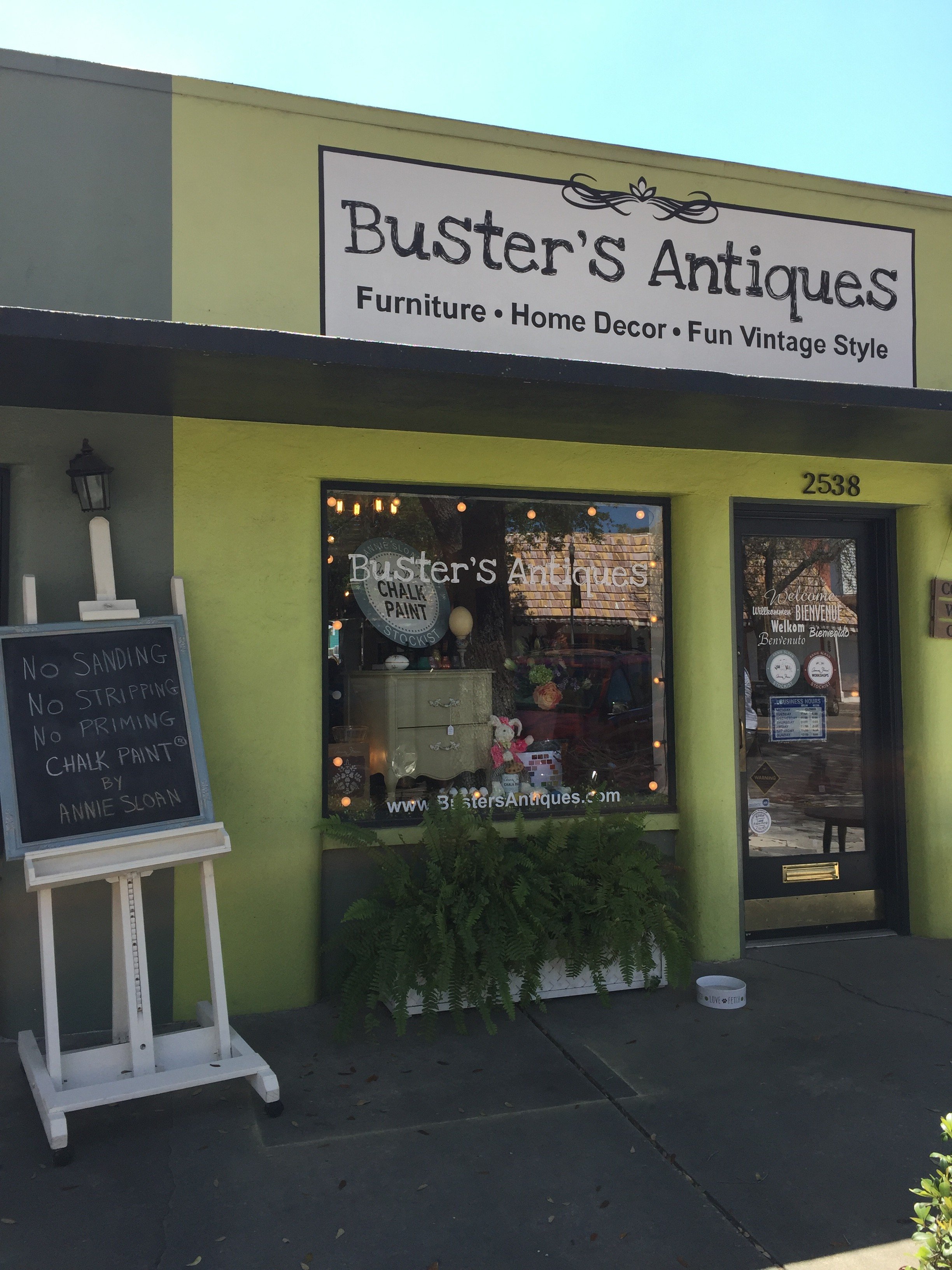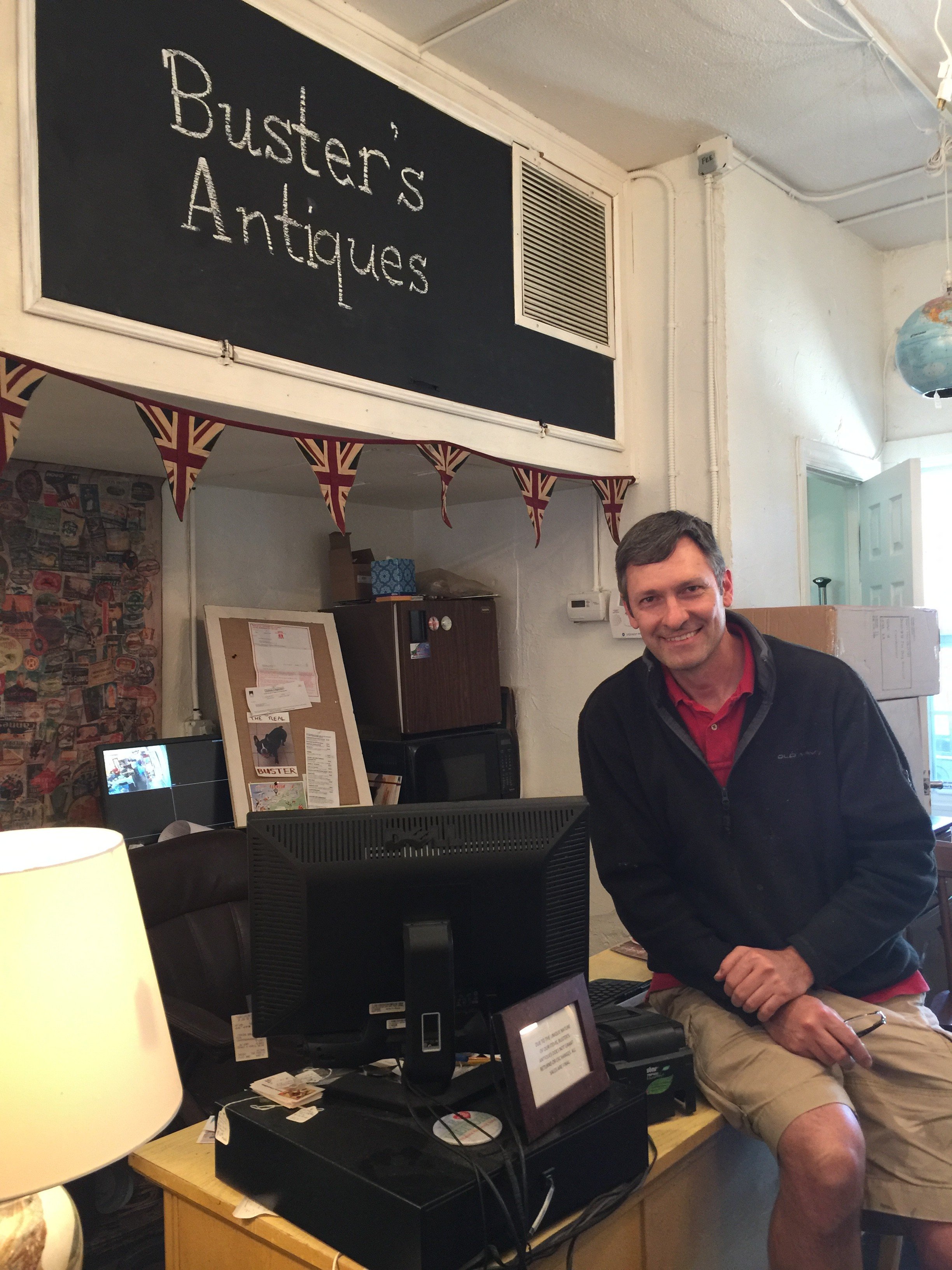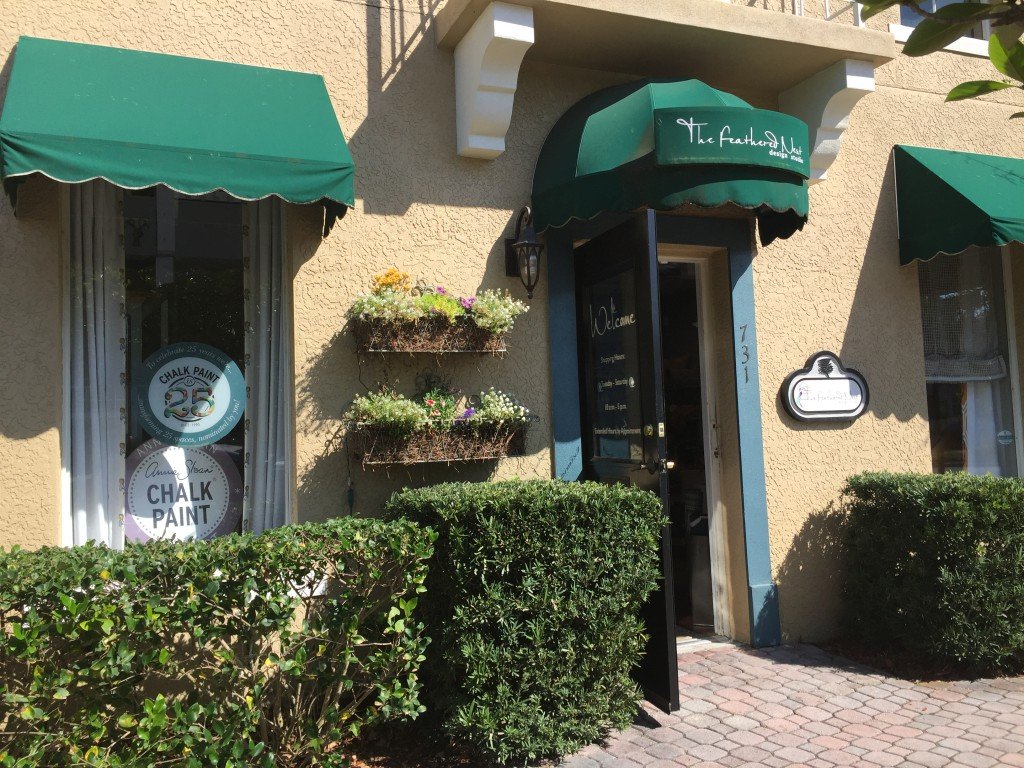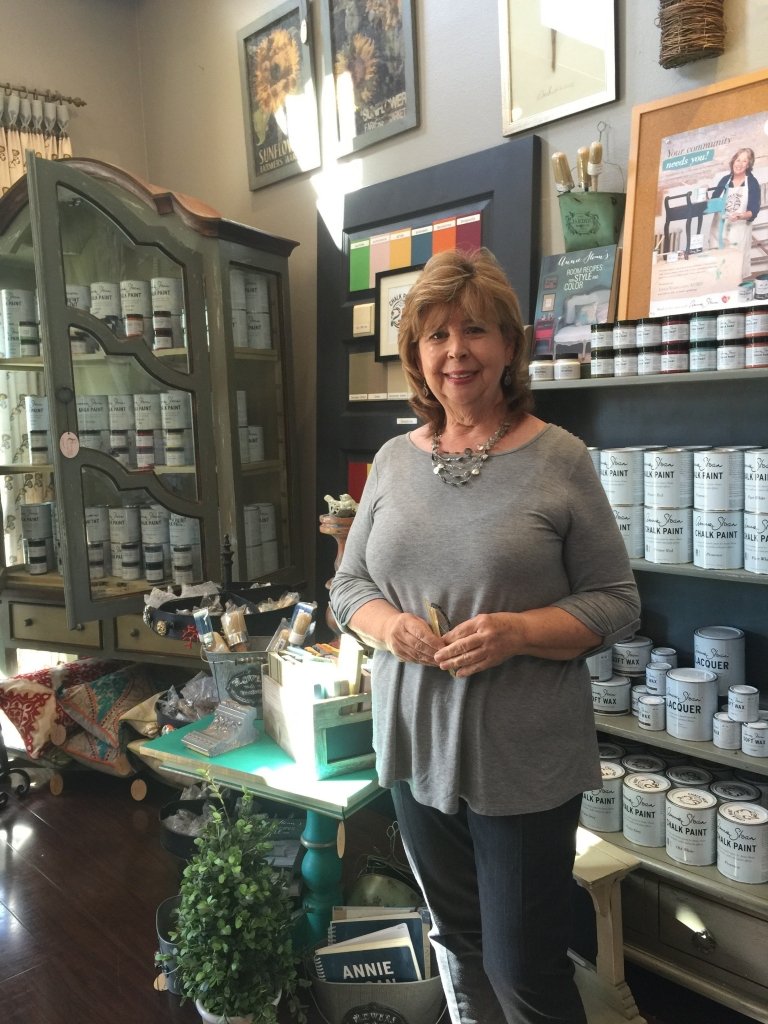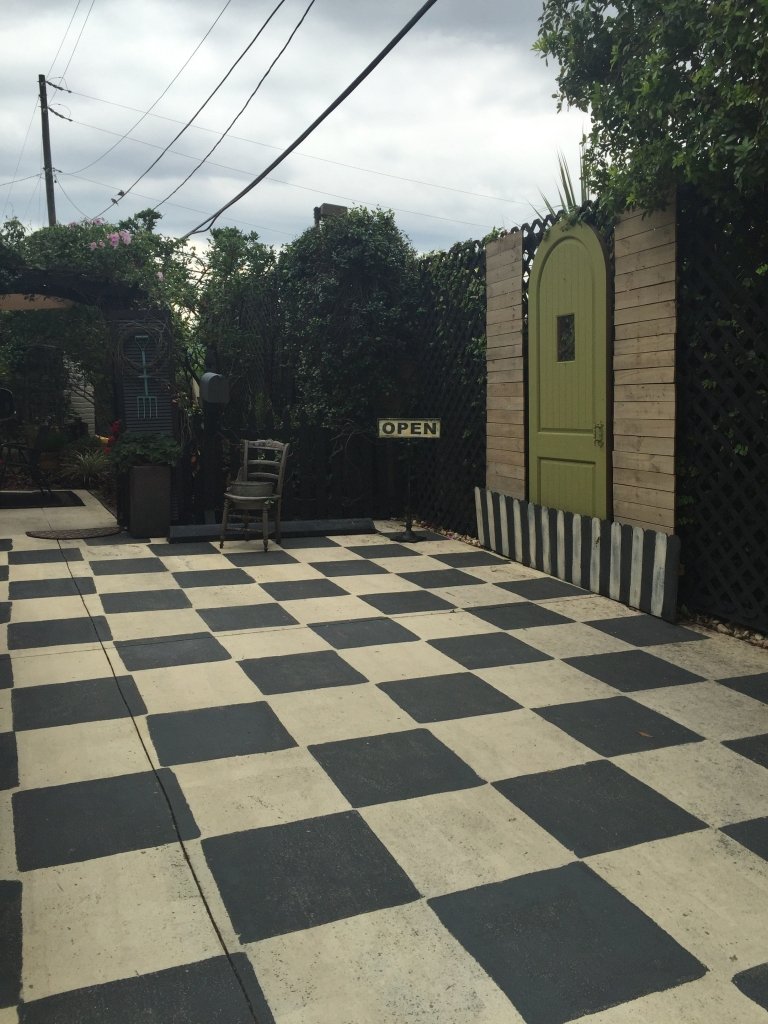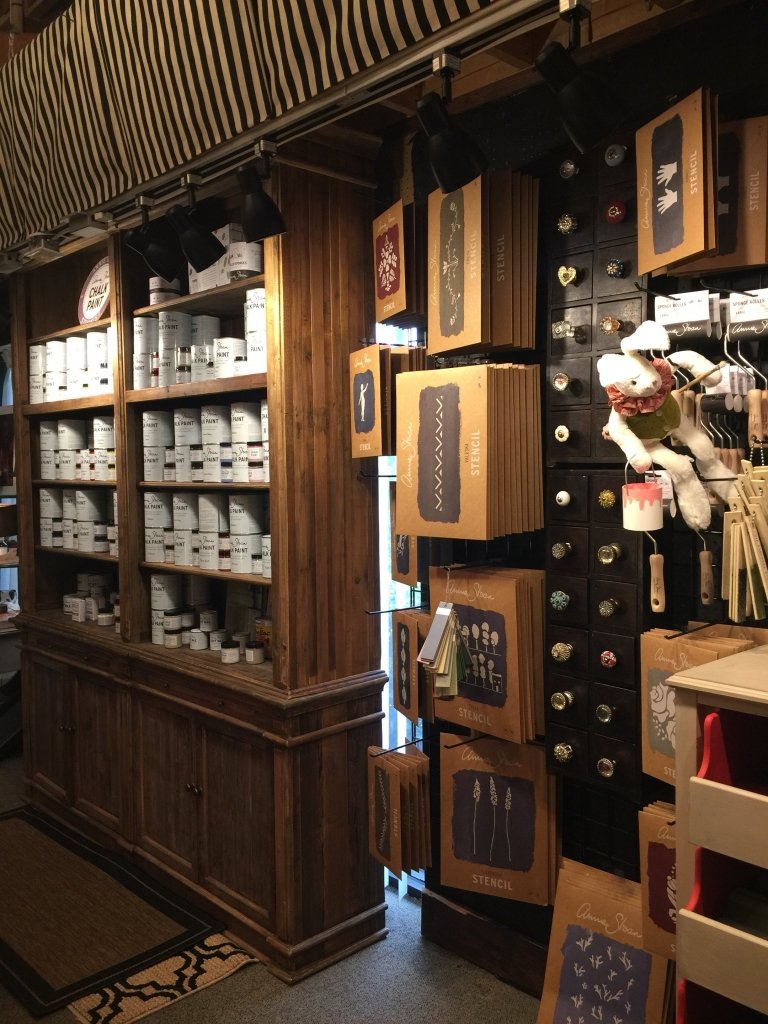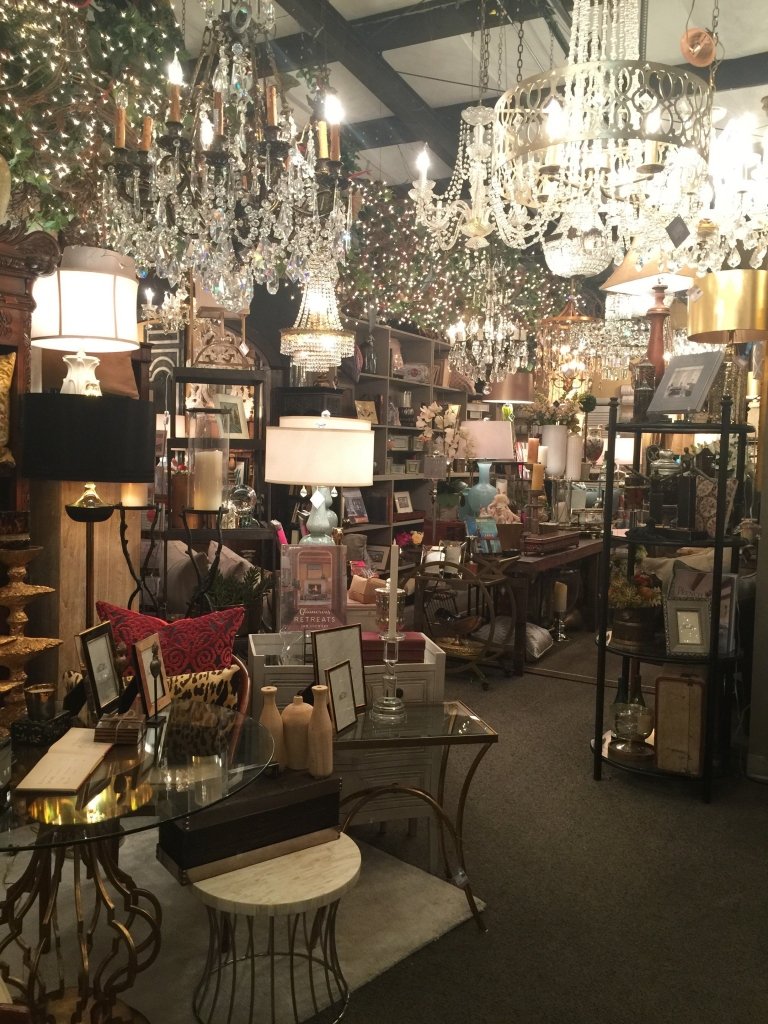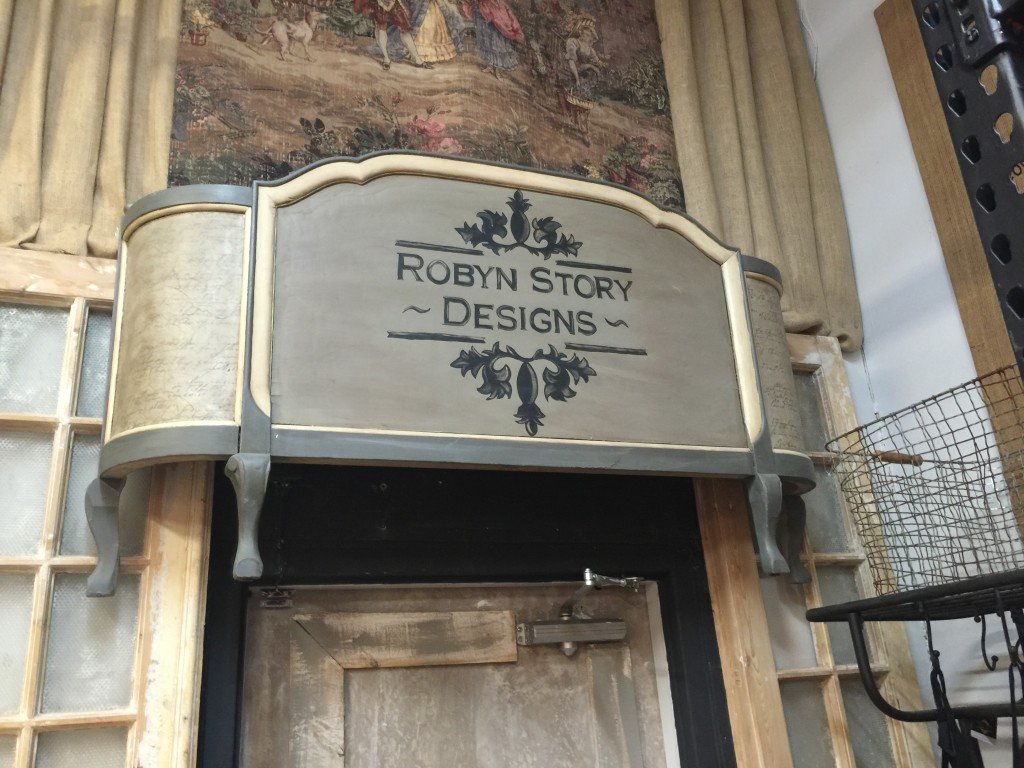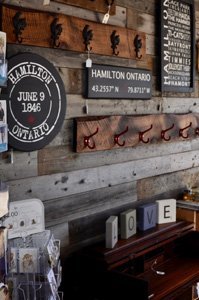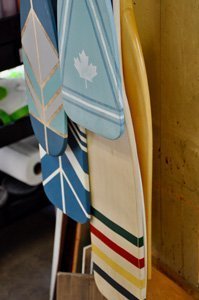Get a Bandaid on that Bleed Through!
It doesn’t happen often but every once in a while we will get the dreaded “Bleed Through” on a piece when we are painting with Chalk Paint™ by Annie Sloan. The most common problem is usually pine knots but sometimes you will get pink from old mahogany stain, yellow or brown splotches from walnut or little brown spots from oak. Now sometimes we can ignore those brown areas if we are going to paint something rustic and we will be using Annie’s Dark Wax but if you are looking for the clean classic lines of Pure White the last thing you are looking for is this!
This is the point where our trusty shellac comes to the rescue because applying another coat of paint at this point will simply amount to two coats of pink paint instead of one.
This is the brand that we use and is available in the store and in our online shop and has never let us down!
Most of the time one coat of shellac is enough, it only takes minutes to dry and you can apply your next coat of Annie Sloan paint. In this case that mahogany stain was stubborn!
In our experience this type of unstable stain is the most stubborn and generally we will apply two coats of shellac at a time but in this case we thought it was a good time to experiment and we knew we would be applying multiple coats of paint.
After two coats of shellac between coats of paint we are seeing good results. And our final coat of paint is free of pink stain.
This was a particularly pesky bleed through and most of the time one coat of shellac will be sufficient, just be confident that all is not lost.
A few things to be a aware of…shellac has a shelf life and should not be stored in an overly cold or hot place. There is a date code on the lid of this brand and I like to stay within a one year time frame although it is guaranteed to stay stable for three years. The code starts with an S with the number following being the last digit of the year of manufacture. In 2017 I would look for and 6 or 7 but a 5 should still be good. Unless you use a lot of shellac buy small, a pint will go a long way.
As always if you have any questions about Annie Sloan Paint and products be sure to stop in the shop or give us a call.
Happy painting everyone
Melanie
A Lady Never Reveals her Age: But Your Furniture Does
Learn How to Date Your Antiques With a Few of These Simple Tips and Tricks
Let’s talk joinery, some of you may be able to spot authentic antique joint work from a mile away, others can’t tell a waltz from a tango, err… or in this case an antique from an… Ikea? It’s all about the intricate details of craftsmanship that expose history and more importantly tell a story. This blog will give you a brief overview of the different styles of joinery, once you’ve learned what to look for, take a few minutes and study the furniture around your home, you’ll be amazed at what you find when you look a little closer.
Knapp Joints: Also known as Pin & Cove, a Pin & Scallop or Half Moon, this is a visually unique style of antique joinery, its typically very strong and can be mass-produced in a factory using a special type of machinery. What makes the Knapp joint so special is that it was only used for about 30 years, from 1870 until 1900. This joint is the first known mechanization for making drawers in the industrial revolution age until eventually being replaced by a machine that cuts dovetails.
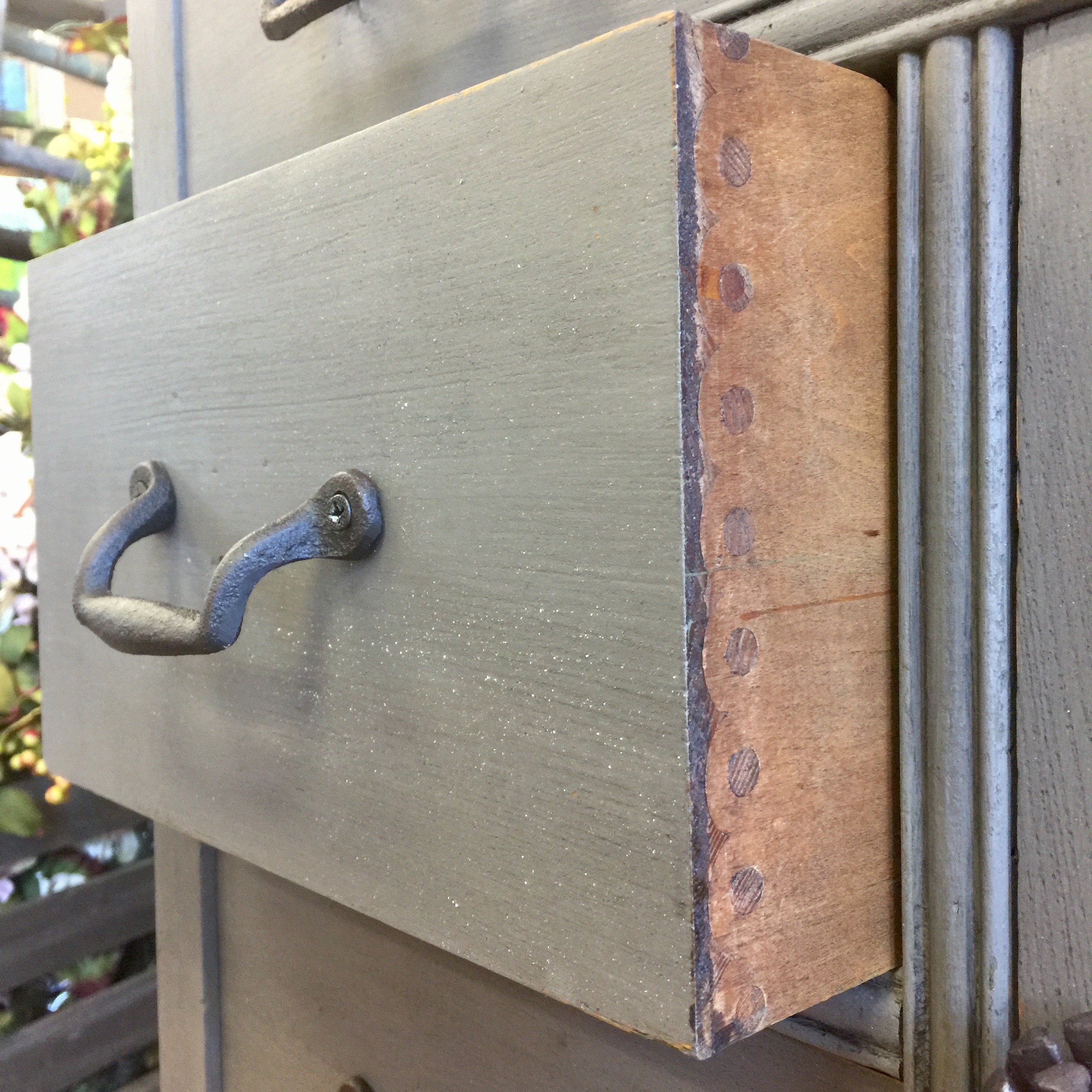 An old washstand that we’ve painted at the shop. I just love the look of this joinery and try not cover it when we’re painting.
An old washstand that we’ve painted at the shop. I just love the look of this joinery and try not cover it when we’re painting.
The History:
The Knapp joint was developed during the late Victoria Era in post Civil War United States. Patented by Charles Knapp of Waterloo, WI in 1867, the Knapp Joint was a huge breakthrough for the furniture industry; machines called routers made circular cuts in wood far quicker than by hand. Large-scale furniture producers were now constructing high quality furniture faster than any small shop was that still relied on hand tools.
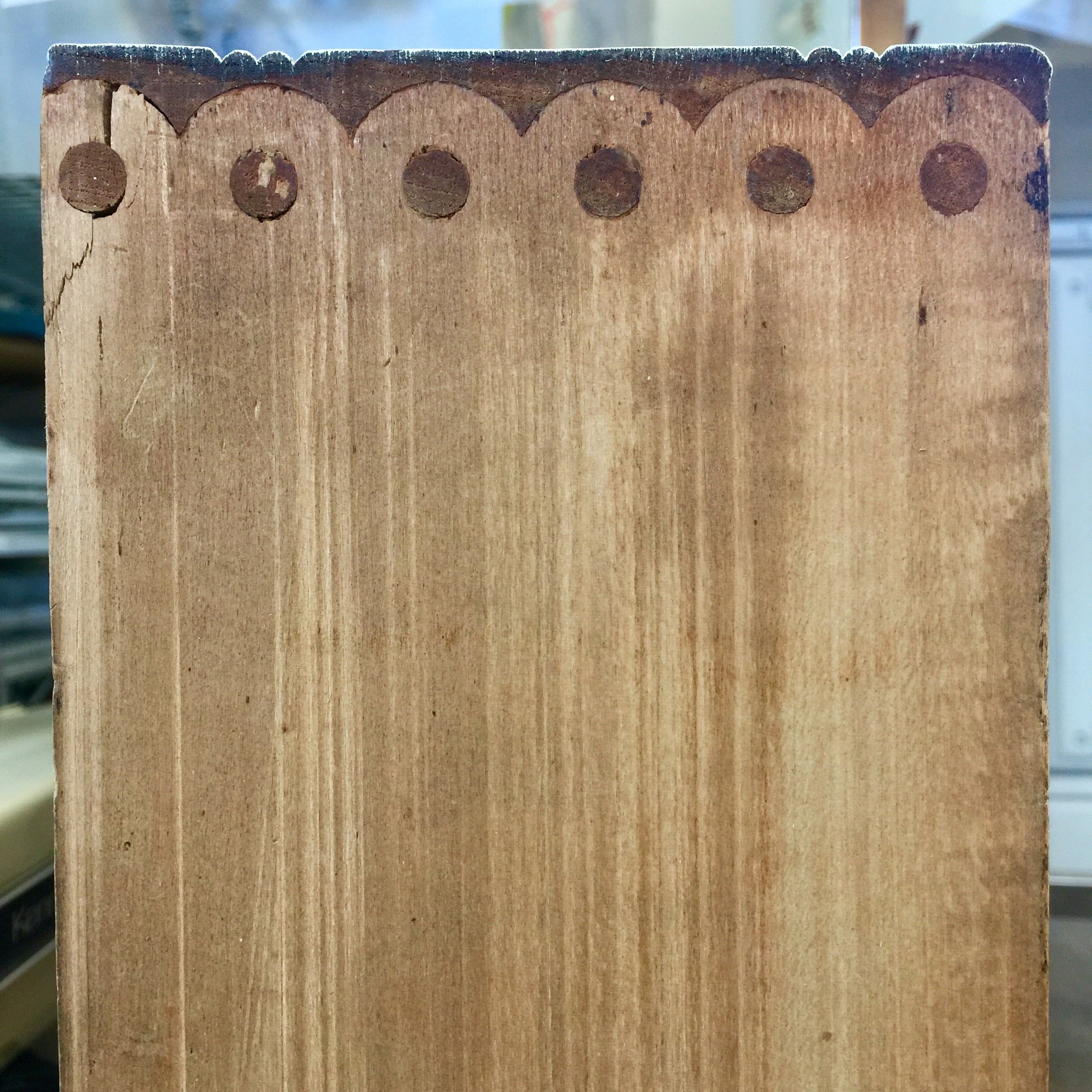 A Pin & Scallop Joint…too pretty to paint over
A Pin & Scallop Joint…too pretty to paint over
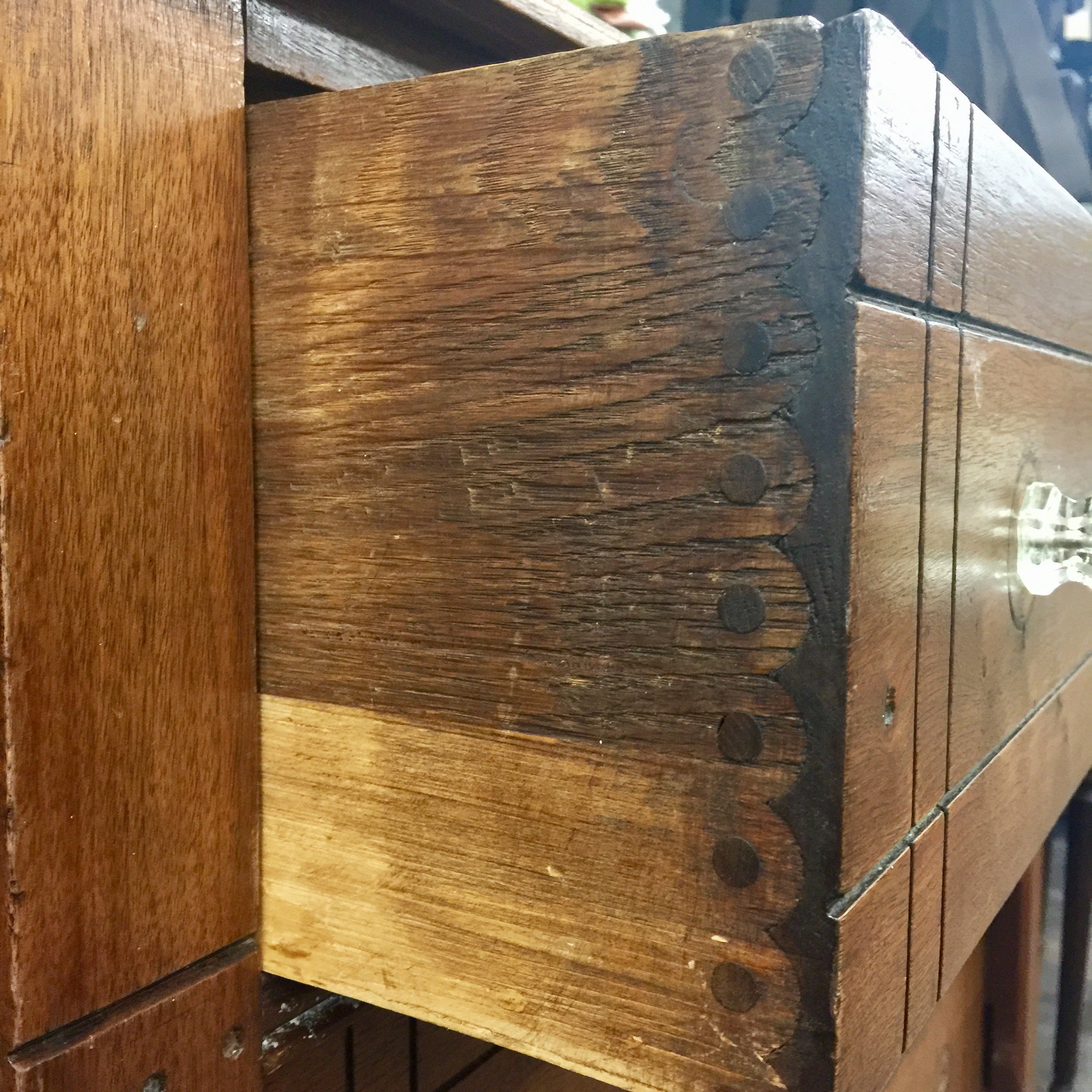 Typical Pin & Scallop drawer joinery on an Arts & Crafts Style dresser.
Typical Pin & Scallop drawer joinery on an Arts & Crafts Style dresser.
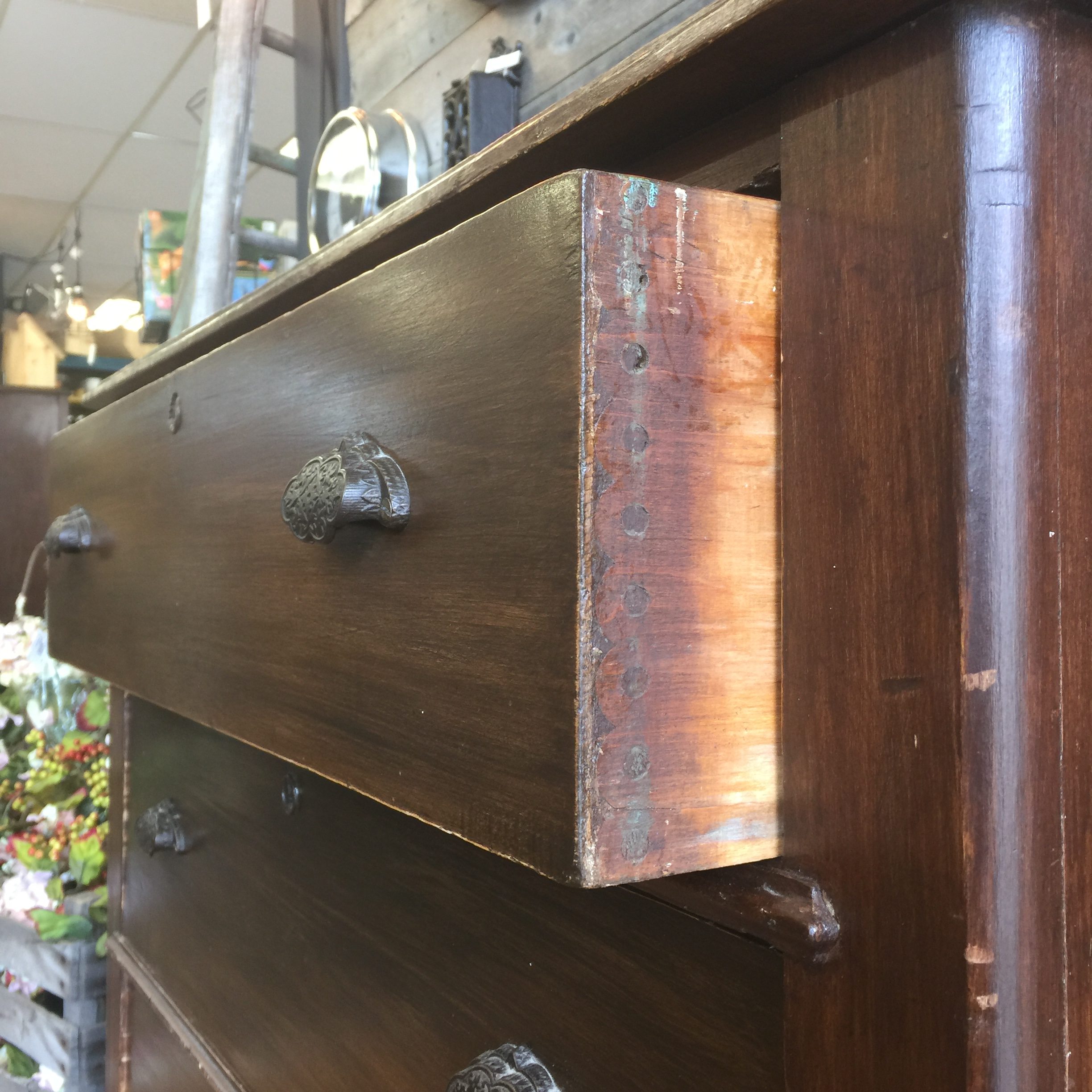 As you can see Pin & Scallop can be found on many different styles of furniture
As you can see Pin & Scallop can be found on many different styles of furniture
Dovetails: this joinery technique is most commonly used in woodworking joinery including furniture, cabinets, and traditional timber framing. In Europe the dovetail joint is also referred to as a swallowtail or fantail joint. A series of pins cut to extend from the end of one board interlock with a series of tails cut into the end of another board. Once glued, a wooden dovetail joint requires no mechanical fasteners.
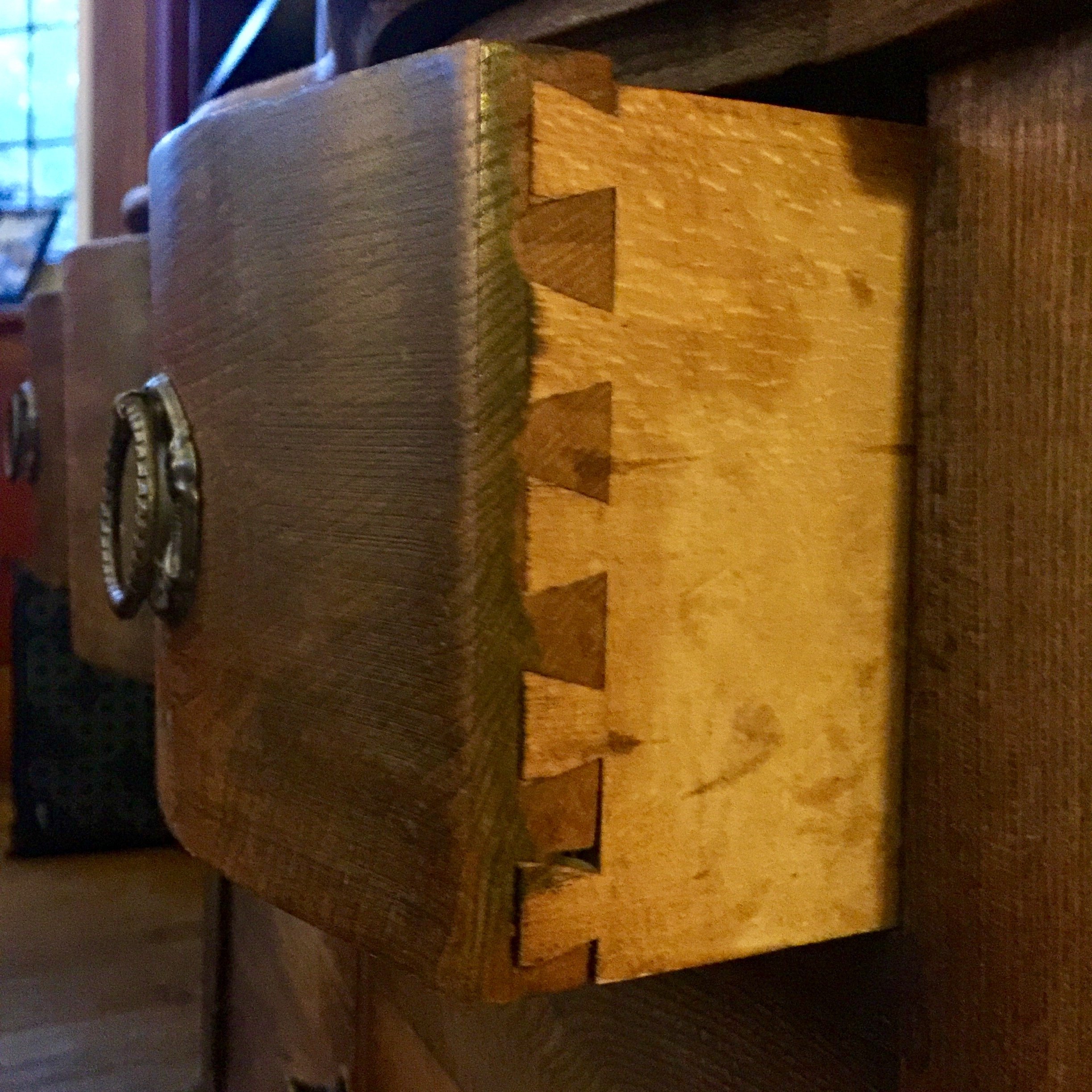 A beautiful old washstand sporting more modern machine made dovetail joinery
A beautiful old washstand sporting more modern machine made dovetail joinery
The History:
One of the oldest forms of joinery, the dovetail is said to pre-date written history. Some of the earliest known examples of the dovetail are in furniture entombed with mummies dating from First Dynasty of ancient Egypt, as well the tombs of Chinese emperors.
 A very old chest using hand crafted dovetails in the construction of the body
A very old chest using hand crafted dovetails in the construction of the body
 Dovetails used in the construction of an Arts & Crafts Style Cupboard
Dovetails used in the construction of an Arts & Crafts Style Cupboard
Now that you’ve learned what it is you should be looking for, you must be wondering where you’ll find these distinctions. Looking at the bottom or back of a piece, or inside its doors and drawers, can provide important clues about whether or not a piece of old furniture was machine cut or crafted by hand. Most handmade pieces will show some irregularities to the surface such as minor nicks indicative of a hand plane being used to smooth out the wood, and this is sometimes even more evident on the back than on the finished front surfaces.
We’ve only scratched the surface (no pun intended) when in comes to dating your furniture, follow our blog and continue to learn helpful tips and tricks from your friends at The Painted Bench!
The Painted Bench on the Road
Last week my hubby and I took a much needed week off and hit the road to Florida to take in some sun, watch some Blue Jays baseball at Spring Training Camp and of course visit some Annie Sloan Stockists! We visited 4 incredibly talented Stockists while we were in the Clearwater area, every one of them should be on your list of must visits!
The first stop we made was to Marcotte’s Salvage. Jenni and I have trained together twice and I love spending time with her, it was a real treat to finally visit her shop!
The next stop we made was to Buster’s Antiques located in an area populated with antiques, galleries and great food! Plan to spend a few hours in this neighbourhood and wear your walking shoes!
With a couple of Blue Jays games under our belts…
we were off to visit The Feathered Nest which just happens to be in a lovely downtown shopping district within site of the ocean! Did I mention how sunny and warm it was????
Last but certainly not least on our list is a shop tucked away from everything, and if you blink you will cruise right on by and not even know missed it. Robyn Story Designs is definitely worth turning around for!!!!
I hope you’ve enjoyed our little tour of a few of the Annie Sloan Stockists near Clearwater Florida. If you’d like their details and locations of these or Stockists near you or along your travels visit Annie Sloan’s website!
Happy Painting Everyone
Melanie



